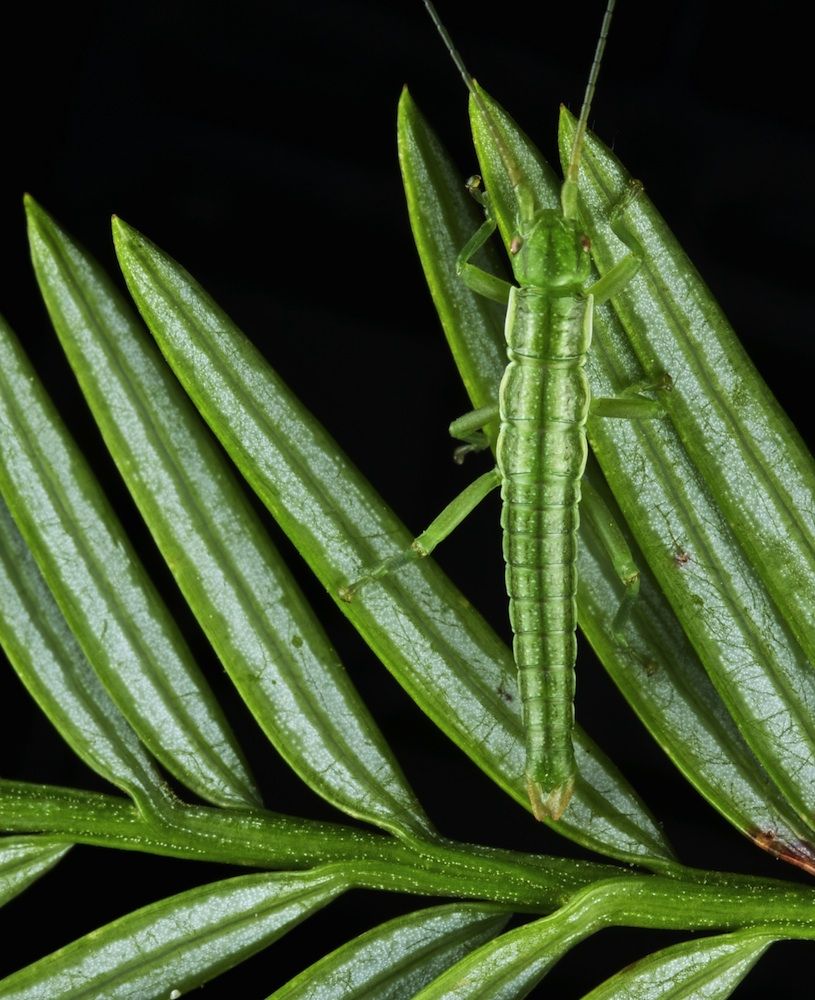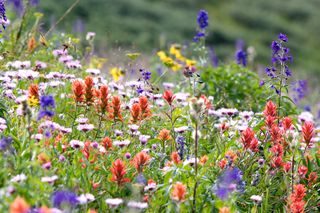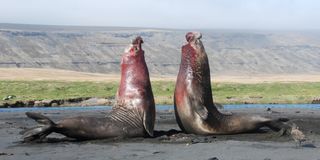
Camo Bugs & Gorgeous Genitalia Dominate Ecology Photo Contest

Fighting elephant seals, camouflaged bugs and "riotously colored flower genitalia" are among the subjects of the winners of the 2013 BMC Ecology image competition.
The contest, run by the journal BMC Ecology and open to anyone affiliated with a research institution, focused on entries depicting ecological interactions. Those interactions ranged from the stress penguins feel when watched by humans to the death of a caterpillar destroyed by wasp larvae.
Of course, there were less-destructive interactions as well: insects and hummingbirds pollinating flowers, for example, and an odd shot of a fake flock of birds set up to try to lure real birds back to their habitat. [See the Winners and Commended Photos]
"From a purely visual point of view, the picture is striking: an almost geometrical arrangement whose two-toned green stripes stand in stark contrast to the pitch-black background," the judges wrote. The photo also captures the millennia of adaptive changes that took place to make the insect look like a redwood twig, they said.

The overall runner-up in the contest was a multihued splash of subalpine flowers in Colorado — those colorful flower genitalia, in the words of the judges.
"Composing a photograph of this nature is surprisingly difficult, and Benjamin Blonder, a PhD student from [the] University of Arizona, deserves congratulation for such a captivating portrayal of what it means to be biodiverse," the judges wrote.
Category winners included a photo of two scarred and bloody Southern elephant seals battling it out for access to mates. Another winning image shows a butterfly alighting on a flower as a wasp sneaks in behind attempting to attack.
Sign up for the Live Science daily newsletter now
Get the world’s most fascinating discoveries delivered straight to your inbox.

"Although I didn't witness predation, I later saw a wasp dismembering a skipper [butterfly] in the same area," photographer Michael Siva-Jothy of the University of Sheffield wrote of this photograph.
In one photograph that didn't make the winners' circle, but was rated as "highly commended" by the judges, a hoverfly appears frozen in mid-air, its wings a blur as it hovers. Another commended image shows two ants in a face-to-face moment of communication.
"Looking through the entries was a fascinating journey into a thriving jungle of ecological research — all the more enjoyable because many of the images submitted were visually stunning," judge and evolutionary biologist Yan Wong said in a statement. "This wasn't simply a search for an amazing picture, however. Just as important were the ecological processes depicted. Ideally, images should immediately hint at one or more ecological processes, yet leave some hidden depths which open up on closer inspection."
Follow Stephanie Pappas on Twitter and Google+. Follow OurAmazingPlanet @OAPlanet, Facebook and Google+. Original article on LiveScience's OurAmazingPlanet.

Stephanie Pappas is a contributing writer for Live Science, covering topics ranging from geoscience to archaeology to the human brain and behavior. She was previously a senior writer for Live Science but is now a freelancer based in Denver, Colorado, and regularly contributes to Scientific American and The Monitor, the monthly magazine of the American Psychological Association. Stephanie received a bachelor's degree in psychology from the University of South Carolina and a graduate certificate in science communication from the University of California, Santa Cruz.











